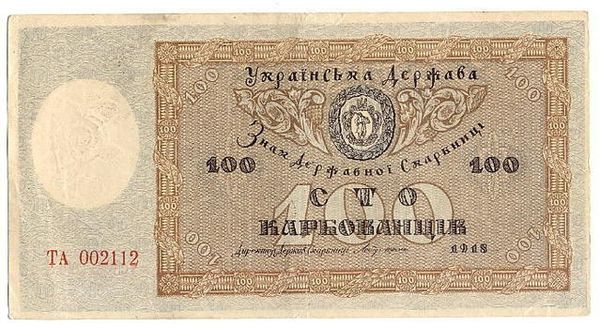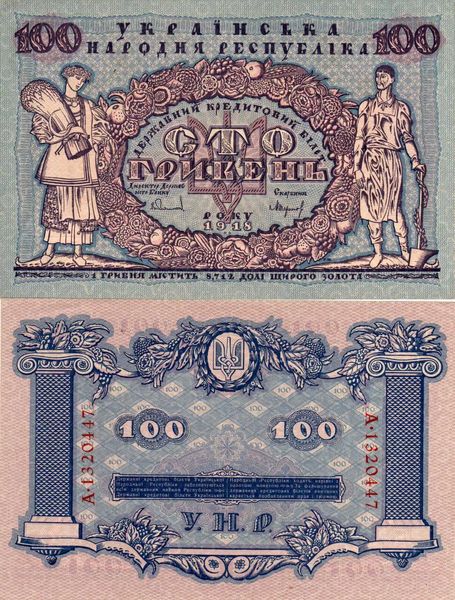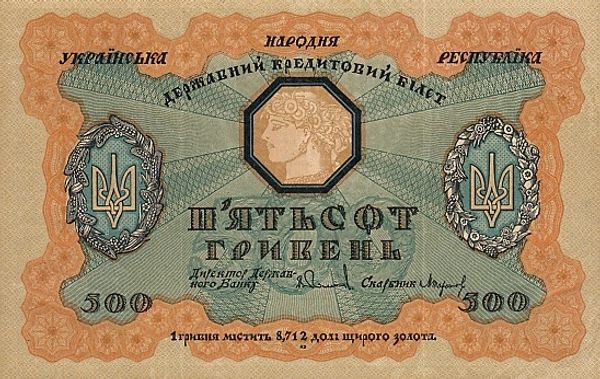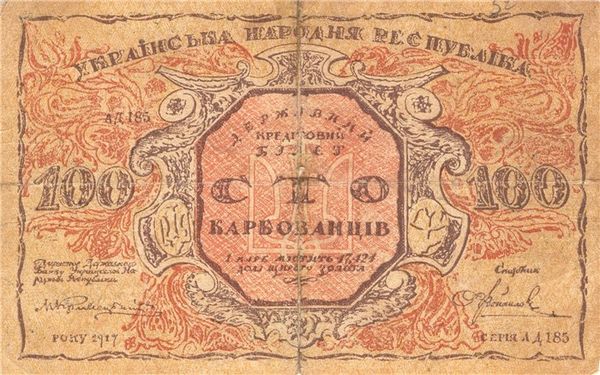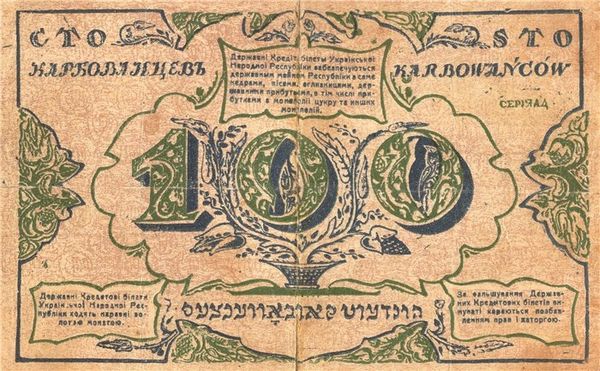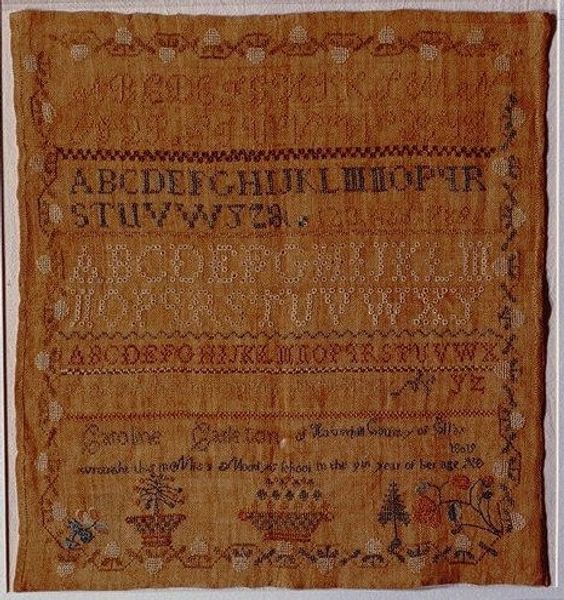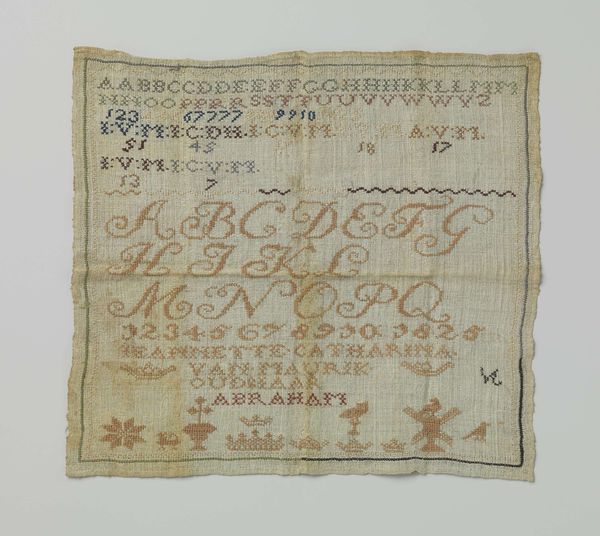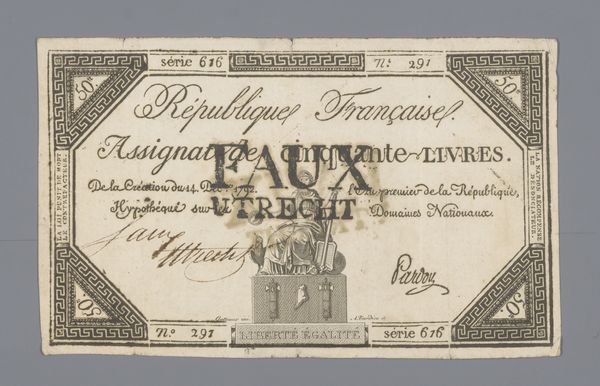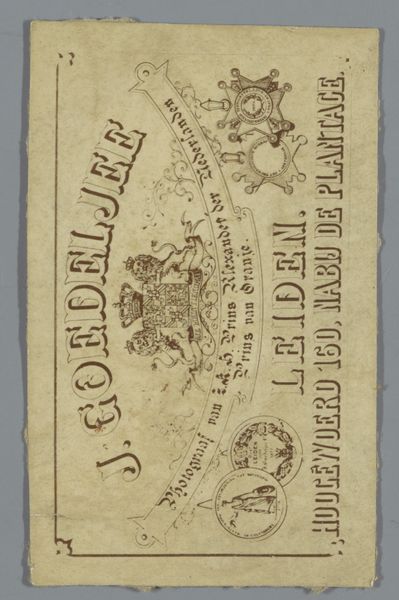
graphic-art, print, paper, typography
#
graphic-art
#
art-nouveau
# print
#
old engraving style
#
paper
#
typography
#
historical font
Copyright: Public domain
Editor: This is the reverse side of a 100 karbovanets note from the Ukrainian State, printed in 1918, designed by Heorhiy Narbut. It's an intriguing blend of graphic design and historical artifact. The Art Nouveau elements and the prominent text give it a very formal, almost authoritarian feel. What can you tell me about its context? Curator: This banknote is a fascinating object. Issued during a turbulent period following the collapse of the Russian Empire, it represents an attempt to establish an independent Ukrainian identity through national currency. Consider how design was deployed here as a tool for nation-building: The inclusion of traditional motifs, combined with the imposing typography, sought to legitimize the new state in the eyes of its citizens, and international markets. Note how "Art Nouveau" as you put it, which originated as anti-establishment and ultra-modern, is here harnessed by Ukrainian nationalists for asserting tradition and power. Why do you think this blend of styles and imagery might have been necessary? Editor: I guess to project an image of both modern progress and historical continuity simultaneously – a brand-new nation, but with deep roots? Curator: Precisely! The choice of fonts, the geometric patterns – everything is carefully considered. Currency isn't just money; it’s a declaration of sovereignty, a visual representation of a nation’s aspirations. Moreover, look at the warnings against counterfeiting printed on the bill. How does this strike you? Editor: That says a lot about the fragility of the state at that time; you have to fight forgery from day one! Curator: It reflects the economic anxieties of a nascent nation. It really encapsulates a moment where art, politics, and everyday life were deeply intertwined. It also points towards what that period saw as a ‘healthy’ economy: it is explicitly tied with a war on the counterfeiting of banknotes, but it implies an expectation and social imaginary around a strong economy for the new nation. Editor: That gives me a much richer understanding of its purpose and meaning. I now appreciate this isn't just pretty design; it's a powerful statement. Curator: Indeed. Examining objects like this reminds us that even seemingly mundane things can offer valuable insights into history and power.
Comments
No comments
Be the first to comment and join the conversation on the ultimate creative platform.
